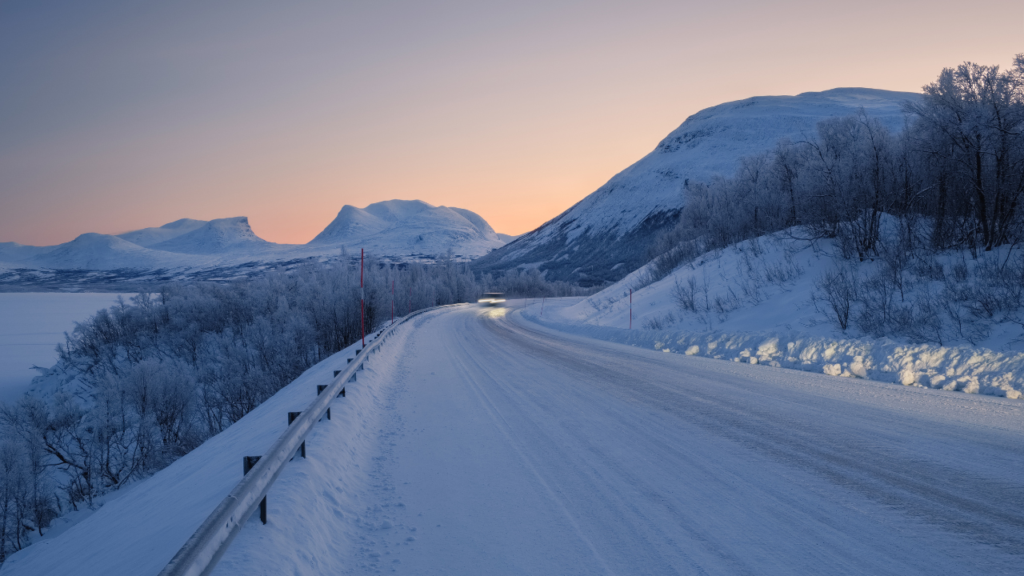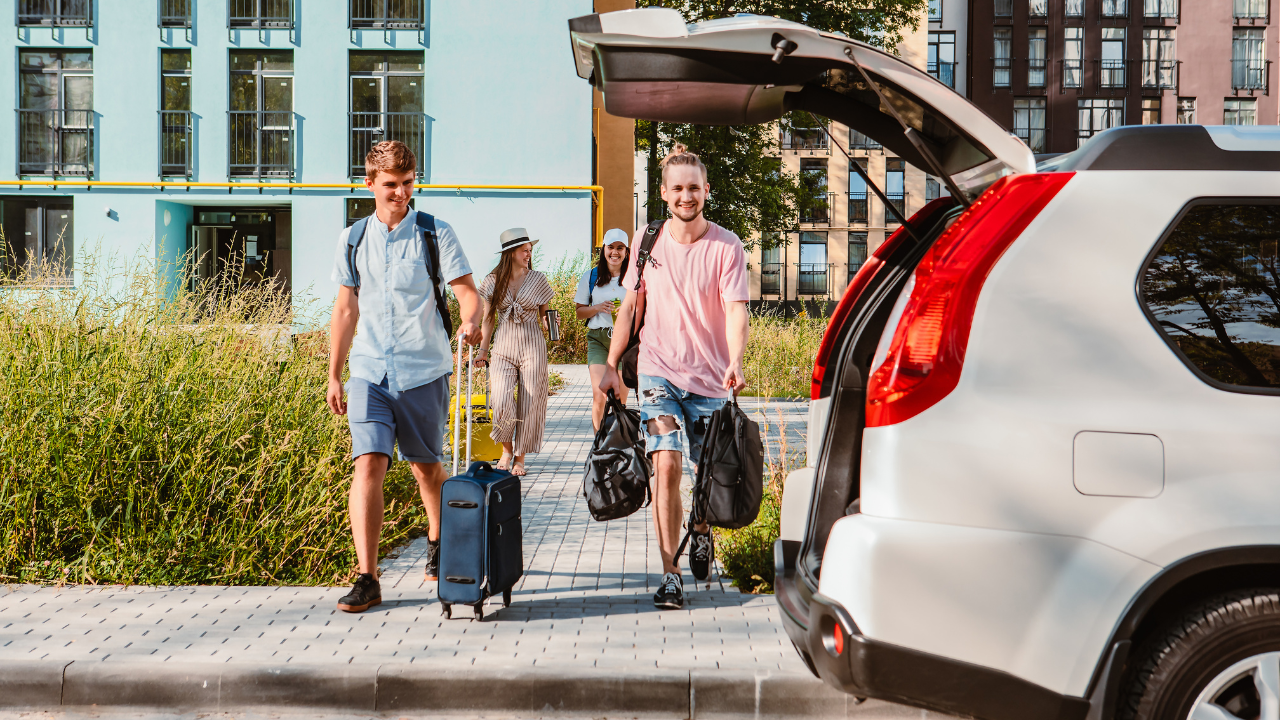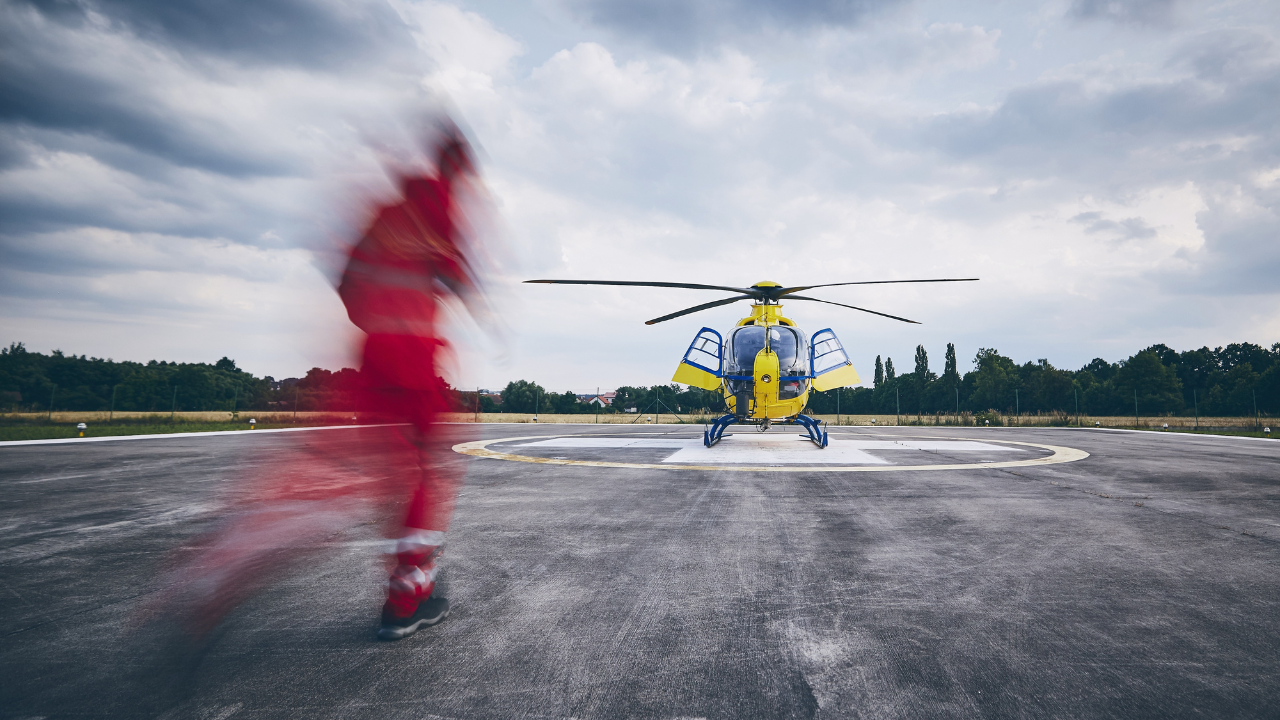Exploring the stunning landscapes of Iceland, Norway, Sweden, and Finland during winter is an unforgettable experience. However, Nordic winter driving presents unique challenges that require preparation and vigilance. Here’s a comprehensive guide to help you navigate dark, icy roads, understand winter tyre regulations, and staying safe during your journey.
1. Dark and icy roads: A winter reality
Nordic winters bring limited daylight, often just a few hours in the far north. Combine this with icy roads, and driving can become treacherous.
- Adjust your speed to match road conditions. Even if the speed limit is higher, driving slower on icy roads can save lives. If necessary, move to the side to let others pass safely.
- Use your lights effectively. Dipped headlights or fog lights improve visibility, especially during heavy snowfall or fog.
- Avoid sudden movements. Gentle braking and steering reduce the risk of skidding.
- Beware of black ice. Often mistaken for water or dry road, black ice is common in autumn and late spring. Stay alert to road surfaces and temperature drops.
2. Equip yourself with mandatory winter tyres
Winter tyres are essential for safety and often legally required during specific months.
General requirements
- Snowflake symbol (3PMSF): Ensure your tyres are marked with the 3PMSF symbol, which indicates compliance with EU winter performance standards.
- Tread depth: The legal minimum varies, but a tread depth of at least 3 mm is common, with 5 mm recommended for challenging conditions.
- Studded tyres: Permitted in all Nordic countries during the winter months but must be fitted on all wheels if chosen.
Country-specific rules
Finland:
- Winter tyres required from 1 November to 31 March in winter conditions.
- Studded tyres permitted from 1 November to the first Monday after Easter.
Norway:
- Winter tyres mandatory from 1 November to the first Monday after Easter (South) and 16 October to 30 April (North).
- Studded tyres permitted within the same periods, with environmental fees in some cities.
Sweden:
- Winter tyres or all-season tyres with the 3PMSF symbol required from 1 December to 31 March in winter conditions.
- Studded tyres allowed from 1 October to 15 April or when road conditions demand.
Iceland:
- No strict mandate for winter tyres, but they must be suitable for road conditions, effectively making them mandatory in practice.
- Studded tyres permitted from 1 November to 15 April, with discussions on limiting their use in urban areas.
Note: Rental cars in Nordic countries are always equipped with tyres suitable for winter driving.
3. Watch for wildlife on the roads
Encounters with reindeer, deer, or even moose are common, especially in forested or rural areas. Lapland, in particular, is home to semi-wild reindeer that will often walk on or forage by the road. Wild moose roam freely and pose a significant hazard due to their size.
- Scan the sides of the road, especially at dusk or dawn.
- If you spot one animal, expect others to follow as more are likely nearby.
- Slow down in areas marked with wildlife crossing signs.
4. Be prepared with essential winter gear
When the temperature drops below zero, it’s a good idea to use an engine heater. Use electric heaters before starting the engine—between 30 minutes and two hours, depending on the temperature. Frigid temperatures can easily turn minor issues into major delays. Equip your vehicle with:
- A blanket and warm clothing, including a beanie, gloves, and winter boots.
- An ice scraper for windshields and de-icer for frozen locks.
- A torch with spare batteries, and a warning triangle.
- First-aid kit.
- Snacks and water.
5. Plan ahead and stay updated
Preparation is key to a smooth winter journey. Before setting out:
- Check road and weather conditions. Live updates are available through Nordic apps and websites.
- Know your route. GPS is helpful, but paper maps are a reliable backup especially in remote areas.
- Respect local laws. Familiarise yourself with each country’s unique driving regulations.
- Electric cars: Plan for reduced range in cold conditions and locate charging stations before setting out.
- In case of emergency: Dial 112 for nationwide assistance.
For everything else—whether it’s roadside help or medical support—Travel Support Europe is here to assist you!
Safe driving during the Nordic winter
Driving in the Nordic countries during winter requires preparation and caution, but the rewards are truly extraordinary. From the breathtaking snowy landscapes to the enchanting Northern Lights dancing across the night sky, the journey is as magical as the destination. Equip your car with the right tyres, carry essential gear, and stay vigilant to safely explore the wonders of Iceland, Norway, Sweden, and Finland.





